Social and Economic Value in Emerging Decentralized Energy Business Models: A Critical Review
Abstract
:1. Introduction
2. Background Concepts
2.1. Social Value
2.2. Economic Value
3. Method
3.1. Search
3.2. Screening
3.3. Extraction
- Type of publication (journal article, book, book chapter, report, conference paper, working paper, etc.) and method
- Aim and research questions
- Abstract
- Relevance (rating or comment)
- Facilitating factors: What are the factors, both internal and external, driving or facilitating the design and uptake of P2P/CSC/TE models and the realization of their economic and social value?
- Impeding factors: What are the factors, both internal and contextual, impeding the design and uptake of P2P/CSC/TE models and the realization of their economic and social value?
- Economic value: What are the forms of economic value perceived to be offered and/or demonstrated by P2P/CSC/TE models? According to whom? How is this shown?
- Social value: What are the forms of social value perceived to be offered and/or demonstrated by P2P/CSC/TE models? According to whom? How is this shown?
- Stakeholder involvement: How do forms of stakeholder involvement shape the design, uptake and impacts of P2P/CSC/TE models?
4. The Social and Economic Value Produced by P2P, CSC and TE Models
4.1. Social Value of P2P, CSC and TE Models
4.1.1. Energy Independence
4.1.2. Local Benefits and Provenance
4.1.3. Sharing and Social Relationships
4.1.4. Environmental Responsibility
4.1.5. Participation and Purpose
4.2. Economic Value of P2P, CSC and TE Models
5. Factors and Conditions of P2P, CSC and TE Model Uptake and Success
5.1. Participant Characteristics and Preferences
5.1.1. Willingness to Participate
5.1.2. Engagement in Technology and Renewable Energy
5.1.3. Complexity, Transparency and Trust
5.2. Model Design and Implementation
5.2.1. Household Engagement
5.2.2. Community Building
5.2.3. (Mis)-Alignment of Project Objectives and Interests
5.2.4. Competition and Tensions between Actors
6. Discussion
6.1. Conflicts between Values
6.1.1. Social vs. Economic Values
6.1.2. Prosumer vs. Business (Retailer, Network) Values
6.1.3. Value of Business as Usual (BAU) vs. New Opportunities
6.2. Forms and Mechanisms of Value Generation
6.3. Open Challenges and Research Directions
6.3.1. Distributional Issues
6.3.2. Value Quantification
6.3.3. Citizen Engagement
7. Conclusions
- Our reading of the literature points to a number of recommendations for researchers and practitioners: First is that the literature reveals tensions and trade-offs among forms of economic and social value. These include tensions between the economic value that may be derived from these models and non-market values such as social relationships; between the interests of prosumers and those of retailers or network operators; and between BAU conditions and the potential but uncertain value that may be gained from new energy models. Thus, the (local) governments and business practitioners considering adoption of such models must account for the value that prospective participants ascribe to doing nothing (BAU) and perceived risk of action due to uncertainty of future benefits.
- P2P, C2C and TE models should not rely solely on economic value to drive adoption and participation, as it may not be possible to arrive at compromises that are equally beneficial across different consumers, prosumers, retailers and network owners. Expanding beyond economic self-interest, by understanding and leveraging social and community values, can provide further motivating factors that broaden the perceived value of stakeholder participation while also incorporating wider community benefits.
- However, while social values such as local benefits/provenance and strengthened social relationships are potential features of P2P, CSC and TE models, our findings suggest that they are not inherent in their design. This means that the social and economic value objectives of these business models and prospective actual businesses that would adopt these models) must be purposefully created by participants and made explicit during their conception. It is important to understand what works for who (i.e., values created in various relationships) and in what context (i.e., cultural, economic, institutional, power structures and political struggles), as well as the distribution of value among those participating—or not participating—in P2P, CSC and TE models. In short, while in theory a business model could be reused anywhere, we suggest that, in practice, the success of such models will be greatly dependant on their contextual adaptation to the local cultural and other realities.
Author Contributions
Funding
Institutional Review Board Statement
Informed Consent Statement
Data Availability Statement
Conflicts of Interest
Appendix A
| Database | Search String | Search Field | Number of Results | Search Date |
|---|---|---|---|---|
| Scopus | TITLE-ABS-KEY (“peer-to-peer” OR “peer to peer” OR p2p OR “commun* self-consump*” OR transactive OR “local energy market*” OR “mutual energy exchange” OR “local energy trading” OR “decentralised energy trading” OR “distributed energy trading” OR “private wire” OR minigrid*) AND TITLE-ABS-KEY (energy OR electricity OR power) AND TITLE-ABS-KEY (societ* OR social OR prosumer* OR consumer* OR customer OR user OR communit* OR independen* OR *sufficien* OR democra* OR right* OR justice OR *equit* OR *equal* OR “non-market” OR econom* OR financ* OR bill* OR pric* OR cost* OR income OR business OR earn* OR pover* OR cultur* OR common* OR return*) | Article title, Abstract, Keywords | 3214 | 3 August 2020 |
| Web of Science | AB = (“peer-to-peer” OR “peer to peer” OR p2p OR “commun* self-consump*” OR transactive OR “sharing economy” OR “collaborative consumption” OR “collaborative economy” OR “peer economy” OR “platform economy” OR “local energy market” OR “mutual energy exchange” OR “decentralised energy trading” OR “distributed energy trading” OR “private wire” OR minigrid*) AND AB = (energy OR electricity OR power) AND AB = (value OR people OR societ* OR social OR prosumer OR consumer OR customer OR user OR communit* OR independen* OR sufficien* OR democra* OR right* OR justice OR equit* OR equal* OR “non-market” OR econom* OR financ* OR bill* OR pric* OR cost* OR income OR business OR earn* OR pover* OR cultur* OR common* OR return*) Conducted the same search for TI (Title) and AK (Author Keywords) Combined search results from the three sets as follows: (AB results) OR (TI results) OR (AK results) | Article title, Abstract, Keywords | Not recorded | 3 August 2020 |
| Science Direct | (peer-to-peer OR transactive) AND energy AND (people OR social OR economic OR community OR value OR culture | Article title, Abstract, Keywords | Not recorded | 3 August 2020 |
References
- Chaurey, A.; Kandpal, T.C. Assessment and Evaluation of PV Based Decentralized Rural Electrification: An Overview. Renew. Sustain. Energy Rev. 2010, 14, 2266–2278. [Google Scholar] [CrossRef]
- Parra, D.; Swierczynski, M.; Stroe, D.I.; Norman, S.A.; Abdon, A.; Worlitschek, J.; O’Doherty, T.; Rodrigues, L.; Gillott, M.; Zhang, X.; et al. An Interdisciplinary Review of Energy Storage for Communities: Challenges and Perspectives. Renew. Sustain. Energy Rev. 2017, 79, 730–749. [Google Scholar] [CrossRef]
- Siano, P. Demand Response and Smart Grids—A Survey. Renew. Sustain. Energy Rev. 2014, 30, 461–478. [Google Scholar] [CrossRef]
- Hirsch, A.; Parag, Y.; Guerrero, J. Microgrids: A Review of Technologies, Key Drivers, and Outstanding Issues. Renew. Sustain. Energy Rev. 2018, 90, 402–411. [Google Scholar] [CrossRef]
- Engelken, M.; Römer, B.; Drescher, M.; Welpe, I.M.; Picot, A. Comparing Drivers, Barriers, and Opportunities of Business Models for Renewable Energies: A Review. Renew. Sustain. Energy Rev. 2016, 60, 795–809. [Google Scholar] [CrossRef]
- Behrangrad, M. A Review of Demand Side Management Business Models in the Electricity Market. Renew. Sustain. Energy Rev. 2015, 47, 270–283. [Google Scholar] [CrossRef]
- Sousa, T.; Soares, T.; Pinson, P.; Moret, F.; Baroche, T.; Sorin, E. Peer-to-Peer and Community-Based Markets: A Comprehensive Review. Renew. Sustain. Energy Rev. 2019, 104, 367–378. [Google Scholar] [CrossRef] [Green Version]
- Guerrero, J.; Gebbran, D.; Mhanna, S.; Chapman, A.C.; Verbič, G. Towards a Transactive Energy System for Integration of Distributed Energy Resources: Home Energy Management, Distributed Optimal Power Flow, and Peer-to-Peer Energy Trading. Renew. Sustain. Energy Rev. 2020, 132, 110000. [Google Scholar] [CrossRef]
- Warneryd, M.; Håkansson, M.; Karltorp, K. Unpacking the Complexity of Community Microgrids: A Review of Institutions’ Roles for Development of Microgrids. Renew. Sustain. Energy Rev. 2020, 121, 109690. [Google Scholar] [CrossRef]
- Montakhabi, M.; van der Graaf, S.; Ballon, P.; Mustafa, M. Prosumers’ Business Models in Future Electricity Markets: Peer-to-Peer, Community Self-Consumption, and Transactive Energy Models. Manuscript Submitted for Publication. Bus. Model Conf. 2021, in press. [Google Scholar]
- Watson, N.; Gorbatcheva, A. Defining Peer to Peer, Collective Self-Consumption, and Transactive Energy Models. in preparation.
- Schwartz, S.H. An Overview of the Schwartz Theory of Basic Values. Online Read. Psychol. Cult. 2012, 2, 2307-0919. [Google Scholar] [CrossRef]
- Brown, D.; Hall, S.; Davis, M.E. What Is Prosumerism for? Exploring the Normative Dimensions of Decentralised Energy Transitions. Energy Res. Soc. Sci. 2020, 66, 101475. [Google Scholar] [CrossRef]
- Laasch, O. Beyond the Purely Commercial Business Model: Organizational Value Logics and the Heterogeneity of Sustainability Business Models. Long Range Plann. 2018, 51, 158–183. [Google Scholar] [CrossRef]
- Morstyn, T.; Farrell, N.; Darby, S.J. Using Peer-to-Peer Energy-Trading Platforms to Incentivize Prosumers to Form Federated Power Plants. Nat. Energy 2018, 3, 94–101. [Google Scholar] [CrossRef]
- Creamer, E.; Eadson, W.; van Veelen, B.; Pinker, A.; Tingey, M.; Braunholtz-Speight, T.; Markantoni, M.; Foden, M.; Lacey-Barnacle, M. Community Energy: Entanglements of Community, State, and Private Sector. Geogr. Compass 2018, 12, 1–16. [Google Scholar] [CrossRef]
- Roelich, K.; Bale, C.S.E.; Turner, B.; Neall, R. Institutional Pathways to Municipal Energy Companies in the UK: Realising Co-Benefits to Mitigate Climate Change in Cities. J. Clean. Prod. 2018, 182, 727–736. [Google Scholar] [CrossRef] [Green Version]
- Brisbois, M.C. Powershifts: A Framework for Assessing the Growing Impact of Decentralized Ownership of Energy Transitions on Political Decision-Making. Energy Res. Soc. Sci. 2019, 50, 151–161. [Google Scholar] [CrossRef]
- Klein, L.P.; Allegretti, G.; Hes, D.; Melkas, H. Revealing Social Values in the Context of Peer-to-Peer Energy Sharing: A Methodological Approach. Sustain. Futur. 2021, 3, 100043. [Google Scholar] [CrossRef]
- Hall, S.; Roelich, K. Business Model Innovation in Electricity Supply Markets: The Role of Complex Value in the United Kingdom. Energy Policy 2016, 92, 286–298. [Google Scholar] [CrossRef] [Green Version]
- Richter, M. Business Model Innovation for Sustainable Energy: German Utilities and Renewable Energy. Energy Policy 2013, 62, 1226–1237. [Google Scholar] [CrossRef] [Green Version]
- Parag, Y.; Sovacool, B.K. Electricity Market Design for the Prosumer Era. Nat. Energy 2016, 1, 1–6. [Google Scholar] [CrossRef]
- Brown, D.; Hall, S.; Davis, M.E. Prosumers in the Post Subsidy Era: An Exploration of New Prosumer Business Models in the UK. Energy Policy 2019, 135, 110984. [Google Scholar] [CrossRef]
- Brown, T.; Schlachtberger, D.; Kies, A.; Schramm, S.; Greiner, M. Synergies of Sector Coupling and Transmission Reinforcement in a Cost-Optimised, Highly Renewable European Energy System. Energy 2018, 160, 720–739. [Google Scholar] [CrossRef] [Green Version]
- Ruggiero, S.; Onkila, T.; Kuittinen, V. Realizing the Social Acceptance of Community Renewable Energy: A Process-Outcome Analysis of Stakeholder Influence. Energy Res. Soc. Sci. 2014, 4, 53–63. [Google Scholar] [CrossRef]
- PRISMA. PRISMA 2020 Checklist. 2020. Available online: www.prisma-statement.org (accessed on 15 November 2021).
- Identifying the Evidence: Literature Searching and Evidence Submission. Available online: https://www.nice.org.uk/process/pmg20/chapter/identifying-the-evidence-literature-searching-and-evidence-submission (accessed on 15 November 2021).
- Ecker, F.; Spada, H.; Hahnel, U.J.J. Independence without Control: Autarky Outperforms Autonomy Benefits in the Adoption of Private Energy Storage Systems. Energy Policy 2018, 122, 214–228. [Google Scholar] [CrossRef]
- Smale, R.; Kloppenburg, S. Platforms in Power: Householder Perspectives on the Social, Environmental and Economic Challenges of Energy Platforms. Sustainability 2020, 12, 692. [Google Scholar] [CrossRef] [Green Version]
- Hahnel, U.J.J.; Herberz, M.; Pena-Bello, A.; Parra, D.; Brosch, T. Becoming Prosumer: Revealing Trading Preferences and Decision-Making Strategies in Peer-to-Peer Energy Communities. Energy Policy 2020, in press. [Google Scholar] [CrossRef]
- Kirchhoff, H.; Strunz, K. Key Drivers for Successful Development of Peer-to-Peer Microgrids for Swarm Electrification. Appl. Energy 2019, 244, 46–62. [Google Scholar] [CrossRef]
- Wörner, A.; Ableitner, L.; Meeuw, A.; Wortmann, F.; Tiefenbeck, V. Peer-to-Peer Energy Trading in the Real World: Market Design and Evaluation of the User Value Proposition. In Proceedings of the 40th International Conference on Information Systems, ICIS 2019, Munich, Germany, 15–18 December 2019. [Google Scholar]
- Spasova, B.; Kawamoto, D.; Takefuji, Y. Evaluation of the Effects of Bidding Strategy with Customized Pricing on the Individual Prosumer in a Local Energy Market. Adv. Sci. Technol. Eng. Syst. 2019, 4, 366–379. [Google Scholar] [CrossRef]
- Wilkins, D.J.; Chitchyan, R.; Levine, M. Peer-to-Peer Energy Markets: Understanding the Values of Collective and Community Trading. In Proceedings of the 2020 CHI Conference on Human Factors in Computing Systems, Honolulu, HI, USA, 21 April 2020; pp. 1–14. [Google Scholar]
- Hackbarth, A.; Löbbe, S. Attitudes, Preferences, and Intentions of German Households Concerning Participation in Peer-to-Peer Electricity Trading. Energy Policy 2020, 138, 111238. [Google Scholar] [CrossRef] [Green Version]
- Löbbe, S.; Hackbarth, A.; Stillahn, T.; Pfeiffer, L.; Rohbogner, G. Chapter 4—Customer Participation in P2P Trading: A German Energy Community Case Study. In Behind and Beyond the Meter; Sioshansi, F., Ed.; Academic Press: Cambridge, MA, USA, 2020; pp. 83–104. ISBN 978-0-12-819951-0. [Google Scholar]
- Ableitner, L.; Meeuw, A.; Schopfer, S.; Tiefenbeck, V.; Wortmann, F.; Wörner, A. Quartierstrom—Implementation of a Real World Prosumer Centric Local Energy Market in Walenstadt, Switzerland. arXiv 2019, arXiv:190507242. [Google Scholar]
- Mengelkamp, E.; Schönland, T.; Huber, J.; Weinhardt, C. The Value of Local Electricity—A Choice Experiment among German Residential Customers. Energy Policy 2019, 130, 294–303. [Google Scholar] [CrossRef]
- Wilkinson, S.; Hojckova, K.; Eon, C.; Morrison, G.M.; Sandén, B. Is Peer-to-Peer Electricity Trading Empowering Users? Evidence on Motivations and Roles in a Prosumer Business Model Trial in Australia. Energy Res. Soc. Sci. 2020, 66, 101500. [Google Scholar] [CrossRef]
- Kubli, M.; Loock, M.; Wüstenhagen, R. The Flexible Prosumer: Measuring the Willingness to Co-Create Distributed Flexibility. Energy Policy 2018, 114, 540–548. [Google Scholar] [CrossRef]
- Scuri, S.; Tasheva, G.; Barros, L.; Nunes, N.J. An HCI Perspective on Distributed Ledger Technologies for Peer-to-Peer Energy Trading. In IFIP Conference on Human-Computer Interaction; Springer: Cham, Switzerland, 2019; Volume 11748 LNCS, pp. 91–111. [Google Scholar] [CrossRef]
- Mengelkamp, E.; Staudt, P.; Gärttner, J.; Weinhardt, C.; Huber, J. Quantifying Factors for Participation in Local Electricity Markets. In Proceedings of the 2018 15th International Conference on the European Energy Market (EEM), Lodz, Poland, 27–29 June 2018; pp. 1–5. [Google Scholar]
- Ableitner, L.; Tiefenbeck, V.; Meeuw, A.; Wörner, A.; Fleisch, E.; Wortmann, F. User Behavior in a Real-World Peer-to-Peer Electricity Market. Appl. Energy 2020, 270, 115061. [Google Scholar] [CrossRef]
- Fell, M.J.; Schneiders, A.; Shipworth, D. Consumer Demand for Blockchain-Enabled Peer-to-Peer Electricity Trading in the United Kingdom: An Online Survey Experiment. Energies 2019, 12, 3913. [Google Scholar] [CrossRef] [Green Version]
- Singh, A.; Strating, A.T.; Romero Herrera, N.A.; Mahato, D.; Keyson, D.V.; van Dijk, H.W. Exploring Peer-to-Peer Returns in off-Grid Renewable Energy Systems in Rural India: An Anthropological Perspective on Local Energy Sharing and Trading. Energy Res. Soc. Sci. 2018, 46, 194–213. [Google Scholar] [CrossRef]
- Singh, A.; Strating, A.T.; Romero Herrera, N.A.; van Dijk, H.W.; Keyson, D.V. Towards an Ethnography of Electrification in Rural India: Social Relations and Values in Household Energy Exchanges. Energy Res. Soc. Sci. 2017, 30, 103–115. [Google Scholar] [CrossRef]
- Plewnia, F.; Guenther, E. The Transition Value of Business Models for a Sustainable Energy System: The Case of Virtual Peer-to-Peer Energy Communities. Organ. Environ. 2020, 34, 479–503. [Google Scholar] [CrossRef]
- Dukovska, I.; Paterakis, N.G.; Slootweg, H.J.G. Local Energy Exchange Considering Heterogeneous Prosumer Preferences. In Proceedings of the 2018 International Conference on Smart Energy Systems and Technologies (SEST), Seville, Spain, 10–12 September 2018; IEEE: Piscataway, NJ, USA, 2018. [Google Scholar]
- Klein, L.P.; Krivoglazova, A.; Matos, L.; Landeck, J.; De Azevedo, M. A Novel Peer-to-peer Energy Sharing Business Model for the Portuguese Energy Market. Energies 2019, 13, 125. [Google Scholar] [CrossRef] [Green Version]
- Müller, S.C.; Welpe, I.M. Sharing Electricity Storage at the Community Level: An Empirical Analysis of Potential Business Models and Barriers. Energy Policy 2018, 118, 492–503. [Google Scholar] [CrossRef]
- Mengelkamp, E.; Gärttner, J.; Rock, K.; Kessler, S.; Orsini, L.; Weinhardt, C. Designing Microgrid Energy Markets. Appl. Energy 2018, 210, 870–880. [Google Scholar] [CrossRef]
- Pumphrey, K.; Walker, S.L.; Andoni, M.; Robu, V. Green Hope or Red Herring? Examining Consumer Perceptions of Peer-to-Peer Energy Trading in the United Kingdom. Energy Res. Soc. Sci. 2020, 68, 101603. [Google Scholar] [CrossRef]
- Klein, L.P.; Matos, L.M.; Allegretti, G. A Pragmatic Approach towards End-User Engagement in the Context of Peer-to-Peer Energy Sharing. Energy 2020, 205, 118001. [Google Scholar] [CrossRef]
- Laursen, L. Grids of All Sizes: Solar Minigrids in Bangladesh Are Changing the Lives of People in Remote Rural Areas. Nature 2017, 551, S148–S149. [Google Scholar] [CrossRef]
- Shrestha, A.; Bishwokarma, R.; Chapagain, A.; Banjara, S.; Aryal, S.; Mali, B.; Thapa, R.; Bista, D.; Hayes, B.P.; Papadakis, A.; et al. Peer-to-Peer Energy Trading in Micro/Mini-Grids for Local Energy Communities: A Review and Case Study of Nepal. IEEE Access 2019, 7, 131911–131928. [Google Scholar] [CrossRef]
- Wang, N.N. Transactive Control for Connected Homes and Neighbourhoods. Nat. Energy 2018, 3, 907–909. [Google Scholar] [CrossRef]
- Ahl, A.; Yarime, M.; Tanaka, K.; Sagawa, D. Review of Blockchain-Based Distributed Energy: Implications for Institutional Development. Renew. Sustain. Energy Rev. 2019, 107, 200–211. [Google Scholar] [CrossRef]
- Binus, J. Planning for Change in the Electric Power Industry: A Primer for Transactive Energy Scenario Development. In Proceedings of the PICMET 2019, Portland, OR, USA, 25–29 August 2019; IEEE: Piscataway, NJ, USA; 2019. [Google Scholar]
- Brilliantova, V.; Thurner, T.W. Blockchain and the Future of Energy. Technol. Soc. 2019, 57, 38–45. [Google Scholar] [CrossRef]
- Filipovic, S.; Radovanovic, M.; Lior, N. What Does the Sharing Economy Mean for Electric Market Transitions? A Review with Sustainability Perspectives. Energy Res. Soc. Sci. 2019, 58, 101258. [Google Scholar] [CrossRef]
- SunContract. Available online: https://suncontract.org/self-sufficient/ (accessed on 15 November 2021).
- Powerpeers. Available online: https://www.powerpeers.nl/ (accessed on 15 November 2021).
- Fell, M.J. Anticipating Distributional Impacts of Peer-to-Peer Energy Trading: Inference from a Realist Review of Evidence on Airbnb. Clean. Responsible Consum. 2021, 2, 100013. [Google Scholar] [CrossRef]
- Singh, A. Conceptualizing Inter-Household Energy Exchanges: An Anthropology-through-Design Approach. Ph.D. Thesis, Delft University of Technology, Delft, The Netherlands, 2019. Available online: https://repository.tudelft.nl/islandora/object/uuid%3A57be7165-2726-4a1a-b076-c5ed3988e00b (accessed on 15 November 2021).
- Müller, M.O.; Stämpfli, A.; Dold, U.; Hammer, T. Energy Autarky: A Conceptual Framework for Sustainable Regional Development. Energy Policy 2011, 39, 5800–5810. [Google Scholar] [CrossRef]
- Langley, P.; Leyshon, A. Platform Capitalism: The Intermediation and Capitalization of Digital Economic Circulation. Finance Soc. 2017, 3, 11–31. [Google Scholar] [CrossRef] [Green Version]
- Kloppenburg, S.; Boekelo, M. Digital Platforms and the Future of Energy Provisioning: Promises and Perils for the next Phase of the Energy Transition. Energy Res. Soc. Sci. 2019, 49, 68–73. [Google Scholar] [CrossRef]
- Jenkins, K.; Sovacool, B.K.; McCauley, D. Humanizing Sociotechnical Transitions through Energy Justice: An Ethical Framework for Global Transformative Change. Energy Policy 2018, 117, 66–74. [Google Scholar] [CrossRef]
- Hiteva, R.; Sovacool, B. Harnessing Social Innovation for Energy Justice: A Business Model Perspective. Energy Policy 2017, 107, 631–639. [Google Scholar] [CrossRef] [Green Version]
- Sovacool, B.K. What Are We Doing Here? Analyzing Fifteen Years of Energy Scholarship and Proposing a Social Science Research Agenda. Energy Res. Soc. Sci. 2014, 1, 1–29. [Google Scholar] [CrossRef]
- Montakhabi, M.; van der Graaf, S.; Ballon, P.; Walravens, N.; Vanhaverbeke, W. Defining the Business Ecosystem of Peer-to-Peer Electricity Trading. In Proceedings of the 6th International Conference on New Business Models, Halmstad, Sweden, 9–11 June 2021; Halmstad University Press: Halmstad, Sweden, 2021; pp. 163–188. [Google Scholar]
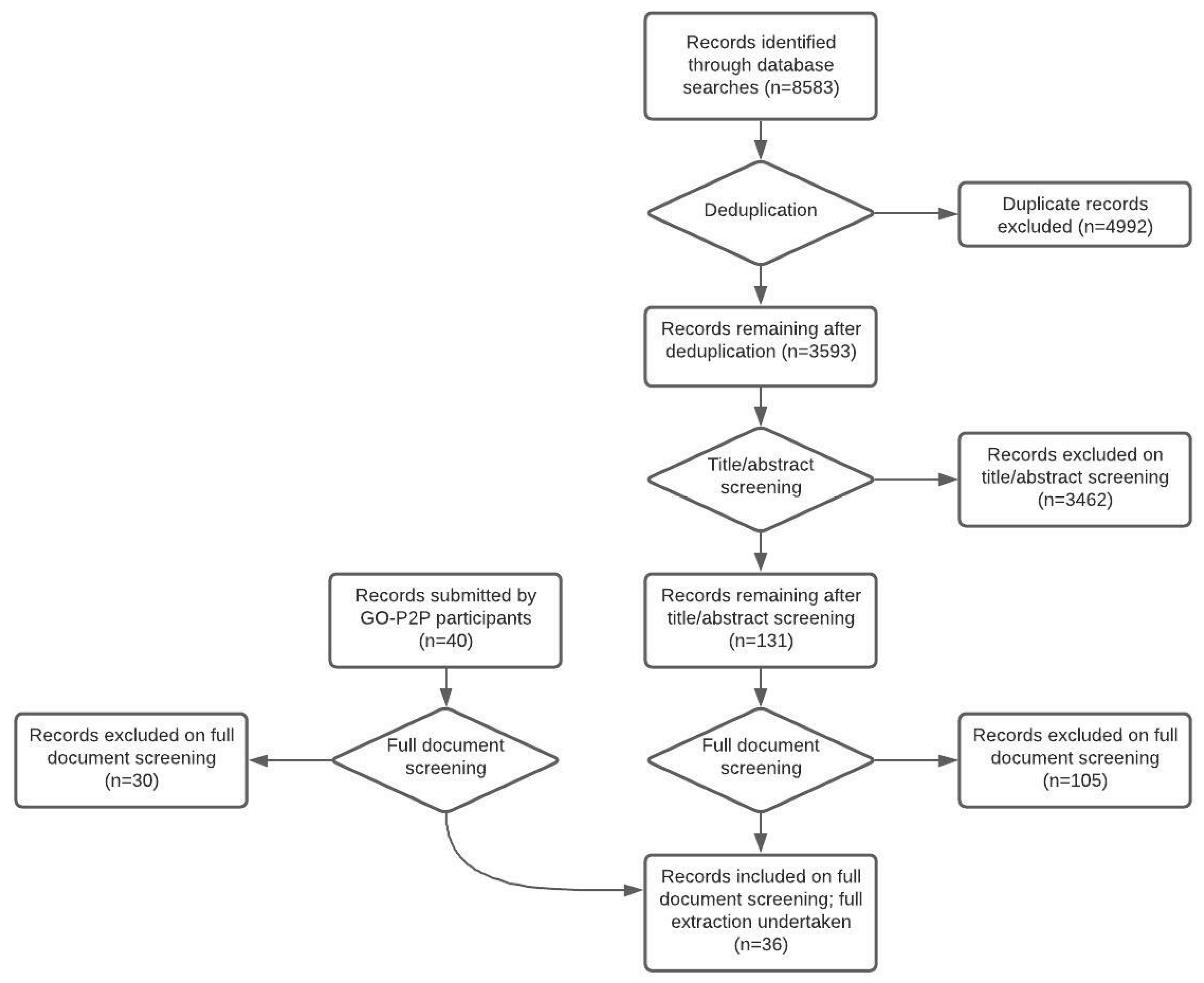
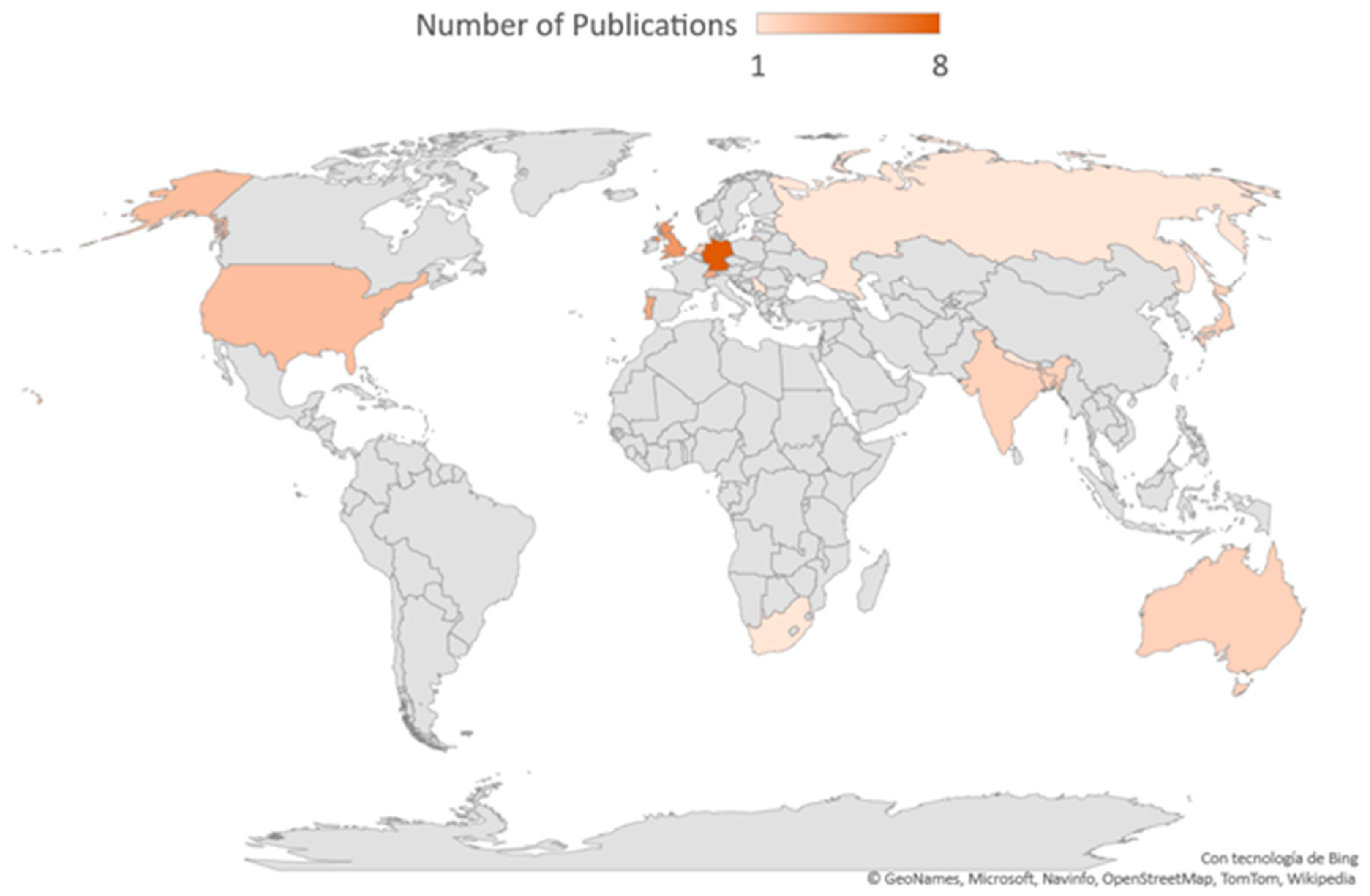
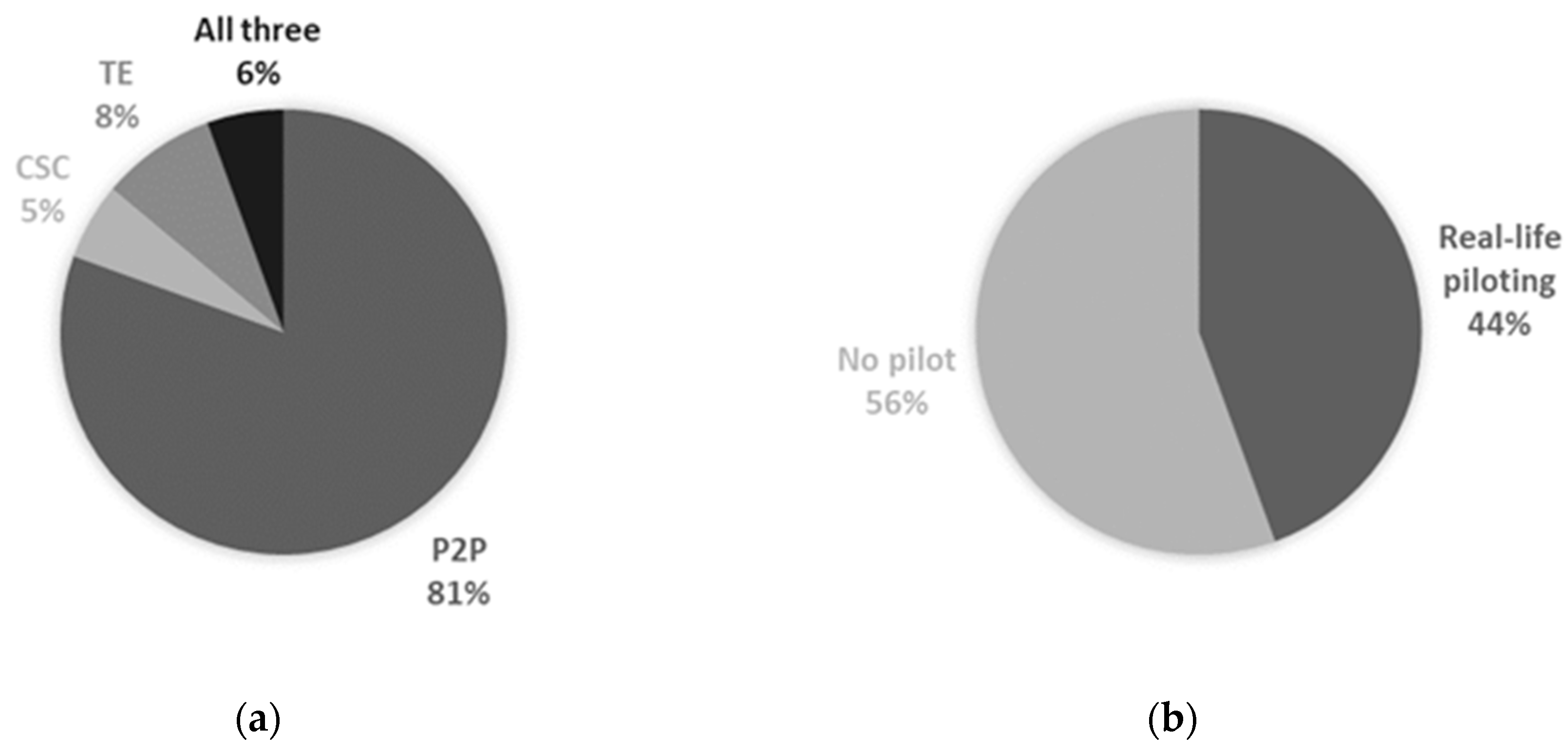
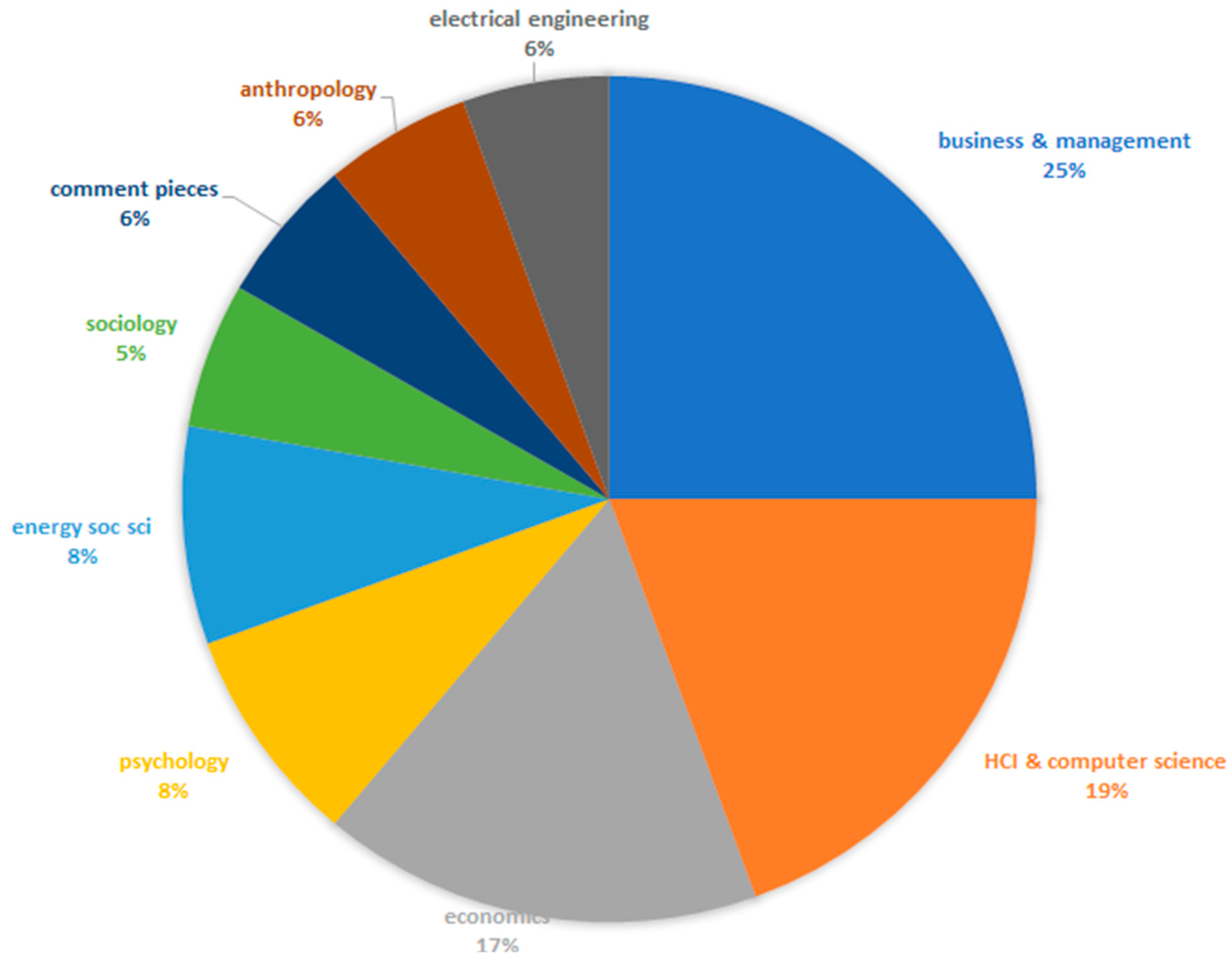
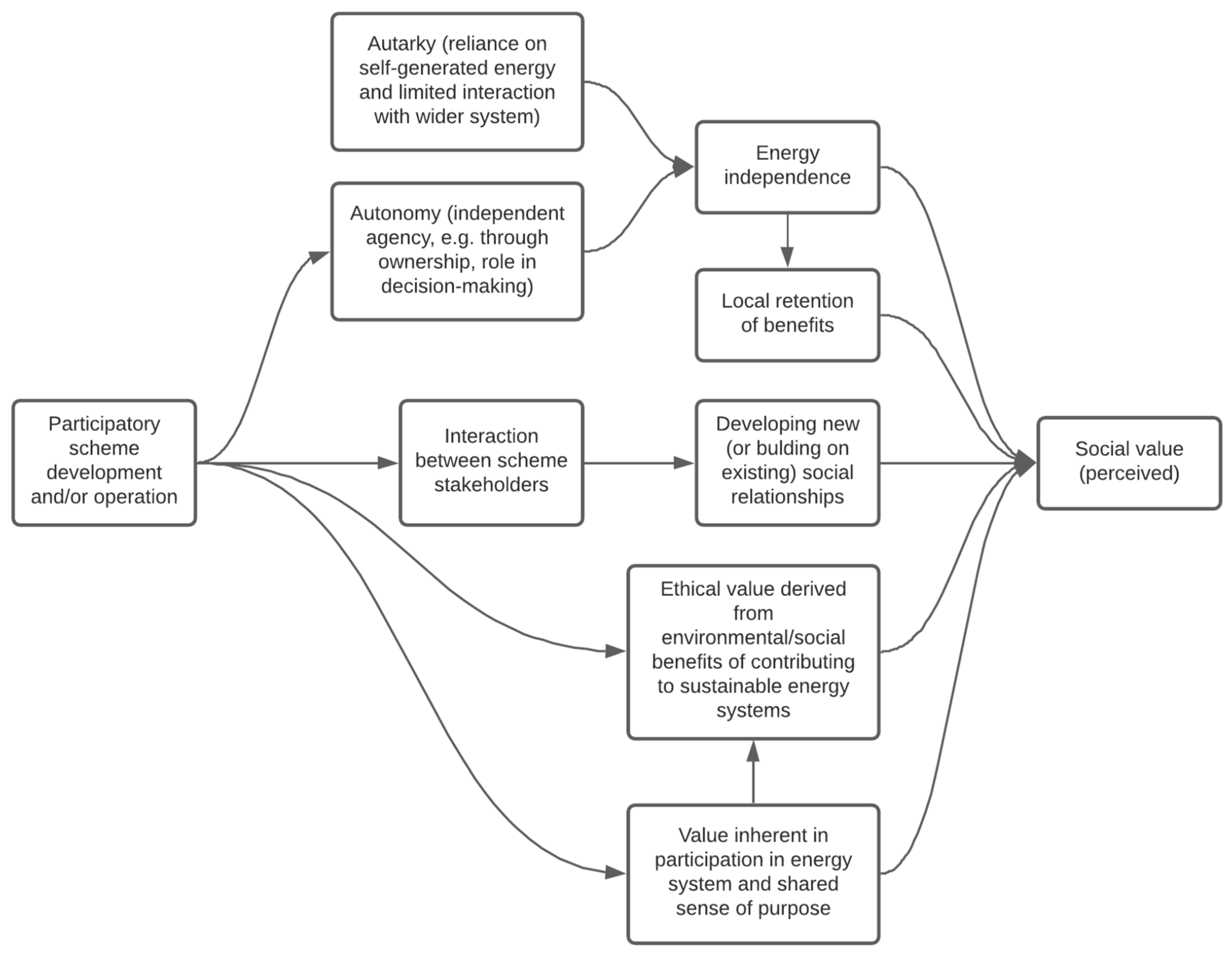
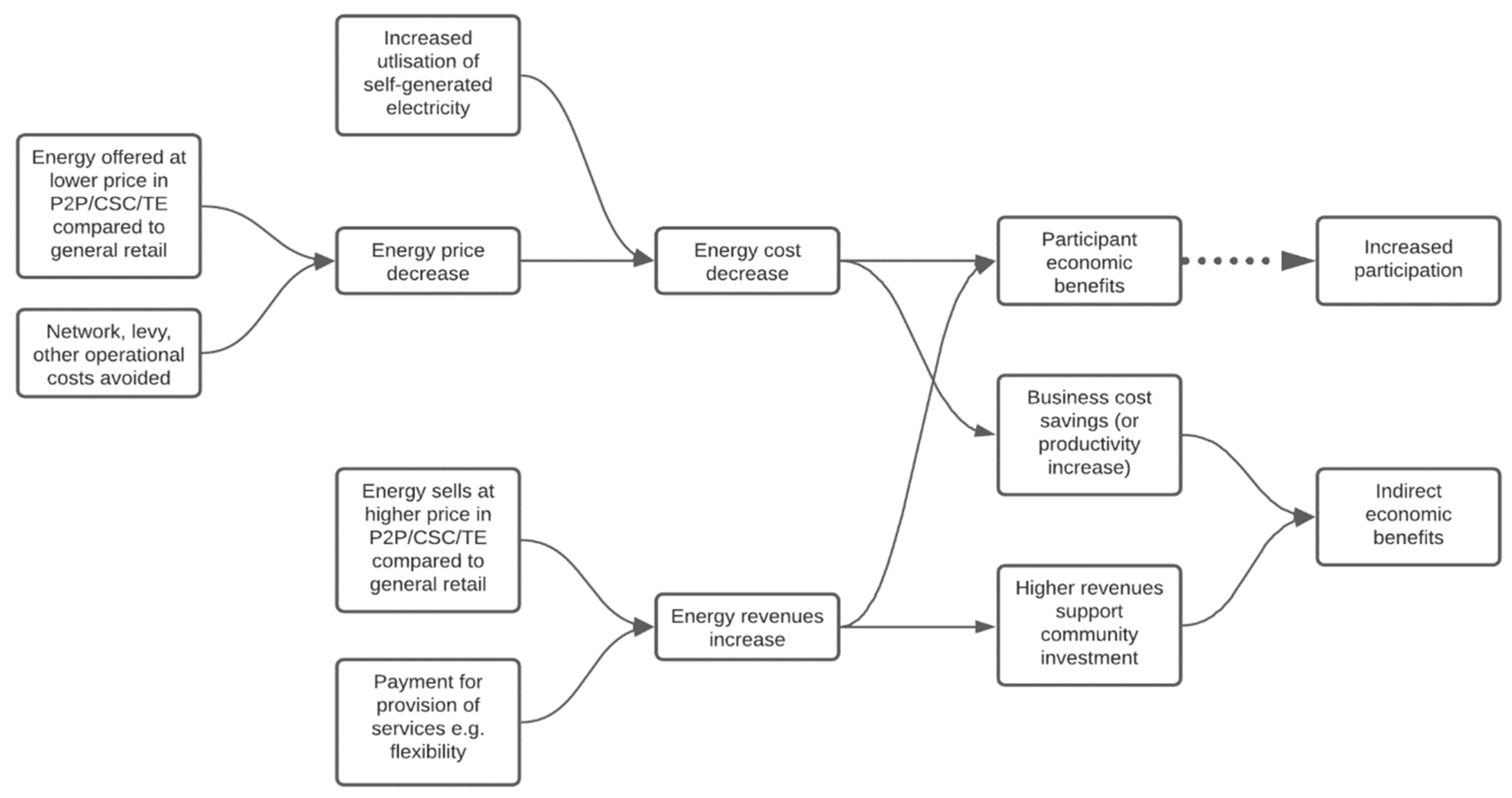
| P2P/CSC/TE | Energy | Social/Economic Value | |
|---|---|---|---|
| Concepts | Peer-to-peer Transactive Community self-consumption Local/decentralised/distributed energy trading Energy exchange Private wire Minigrid | Energy Electricity Power | Prosumers/consumers/customers/users Community Independence Sufficiency Democracy Rights Justice Value Equity/equality Markets Economic Financial Bills/pricing/costs Income/earnings/returns Bills/pricing/costs Income/earnings/returns Business Poverty Culture Commons |
| Search terms | peer-to-peer “peer to peer” p2p “commun* self-consump*” “local energy market*” “mutual energy exchange” “local energy trading” “decentralised energy trading” “distributed energy trading” “private wire” minigrid* | energy electricity power | societ* social prosumer* consumer* customer user communit* independen* *sufficien* democra* right* justice *equit* *equal* “non-market” value econom* financ* bill* pric* cost* income business earn* pover* cultur* common* return* |
| Example Scopus string | TITLE-ABS-KEY (“peer-to-peer” OR “peer to peer” OR p2p OR “commun* self-consump*” OR transactive OR “local energy market*” OR “mutual energy exchange” OR “local energy trading” OR “decentralised energy trading” OR “distributed energy trading” OR “private wire” OR minigrid*) AND TITLE-ABS-KEY (energy OR electricity OR power) AND TITLE-ABS-KEY (societ* OR social OR prosumer* OR consumer* OR customer OR user OR communit* OR independen* OR *sufficien* OR democra* OR right* OR justice OR *equit* OR *equal* OR “non-market” OR econom* OR financ* OR bill* OR pric* OR cost* OR income OR business OR earn* OR pover* OR cultur* OR common* OR return*) | ||
| Inclusion Criteria | Exclusion Criteria |
|---|---|
| English language | Non-English language |
| Contains empirical or conceptual/theoretical consideration of economic and social value produced by P2P/CSC/TE models. | Sources considering only the broad factors driving/impeding these models if they make no reference to social and economic factors/values. |
| Involves some engagement with participants of actual pilots or trials, or hypothetical P2P/CSC/TE models | Sources based only on modelling analysis (i.e., based on assumptions about potential value), rather than any empirical engagement |
| Sources that consider economic value but in ways unrelated to economic value for the participants of P2P/CSC/TE models and their local communities (e.g., sources focused exclusively on value for actors other than the local community. |
| Concept | Description |
|---|---|
Energy independence
| Autarky refers to energy self-sufficiency through reliance on self-generated energy and limited interaction with wider electricity system (including self-assured continuity of energy supply) Autonomy is seen more in terms of social agency, either though ownership, involvement in decision making or independence |
| Local benefits/provenance | Benefits that are created and retained in specific geographic communities or communities of practice. These benefits may be social or of economic in nature |
| Sharing and social relationships | Developing new and existing social relationships and reciprocity through the sharing and/or trading of electricity |
| Environmental responsibility | Shared ethical values which are derived from the environmental benefits of renewable and sustainable energy systems |
| Participation and purpose | Value derived from the participatory process of developing and trading renewable energy |
| Concept | Description |
|---|---|
| Self-consumption of renewable electricity | The utilization of self-generated electricity at zero marginal cost |
| Reduced electricity import costs | Achieving lower electricity import prices than BAU |
| Improved electricity export prices | Achieving higher electricity export prices than BAU |
| Costs placed on wider energy system | The economic impact on the wider electricity/energy system |
| Local economic development | The creation of local economic benefits/disbenefits |
| Concept | Description |
|---|---|
| Regional differences | Social, cultural and institutional differences between regions may drive different attitudes to the adoption of P2P/CSC/TE |
| Demographic factors | Younger, wealthier and highly educated people who are less politically conservative tend to be more interested in these models |
| Engagement in technology and renewable energy | People who have concerns about climate change, already have involvement with decentralized energy systems or are technology early adopters are all more likely to be positive as to the adoption of P2P/CSC/TE |
| Complexity, transparency & trust | The complexity of P2P/CSC/TE models is a potential issue, with trial participants tending to favour automation over more active participation. Trial participants also commonly express concerns about financial transparency and data protection, with different levels of trust for different types of coordinating actor. |
| Concept | Description |
|---|---|
| Household engagement | Successful trials of P2P/CSC/TE models have undertaken extensive household engagement activities and ensured strong participation in the trials |
| Community building | Studies also highlight the importance of relationship building within the host communities |
| (Mis)-alignment of project objectives and interests | Studies identified the importance of aligning the objectives of the trial’s designers with the host communities |
| Competition and tensions between actors | Competing interests between project stakeholders and wider incumbent actors and institutions can be an important factor in the success and scalability of P2P/CSC/TE models |
Publisher’s Note: MDPI stays neutral with regard to jurisdictional claims in published maps and institutional affiliations. |
© 2021 by the authors. Licensee MDPI, Basel, Switzerland. This article is an open access article distributed under the terms and conditions of the Creative Commons Attribution (CC BY) license (https://creativecommons.org/licenses/by/4.0/).
Share and Cite
Adams, S.; Brown, D.; Cárdenas Álvarez, J.P.; Chitchyan, R.; Fell, M.J.; Hahnel, U.J.J.; Hojckova, K.; Johnson, C.; Klein, L.; Montakhabi, M.; et al. Social and Economic Value in Emerging Decentralized Energy Business Models: A Critical Review. Energies 2021, 14, 7864. https://doi.org/10.3390/en14237864
Adams S, Brown D, Cárdenas Álvarez JP, Chitchyan R, Fell MJ, Hahnel UJJ, Hojckova K, Johnson C, Klein L, Montakhabi M, et al. Social and Economic Value in Emerging Decentralized Energy Business Models: A Critical Review. Energies. 2021; 14(23):7864. https://doi.org/10.3390/en14237864
Chicago/Turabian StyleAdams, Sophie, Donal Brown, Juan Pablo Cárdenas Álvarez, Ruzanna Chitchyan, Michael J. Fell, Ulf J. J. Hahnel, Kristina Hojckova, Charlotte Johnson, Lurian Klein, Mehdi Montakhabi, and et al. 2021. "Social and Economic Value in Emerging Decentralized Energy Business Models: A Critical Review" Energies 14, no. 23: 7864. https://doi.org/10.3390/en14237864
APA StyleAdams, S., Brown, D., Cárdenas Álvarez, J. P., Chitchyan, R., Fell, M. J., Hahnel, U. J. J., Hojckova, K., Johnson, C., Klein, L., Montakhabi, M., Say, K., Singh, A., & Watson, N. (2021). Social and Economic Value in Emerging Decentralized Energy Business Models: A Critical Review. Energies, 14(23), 7864. https://doi.org/10.3390/en14237864








